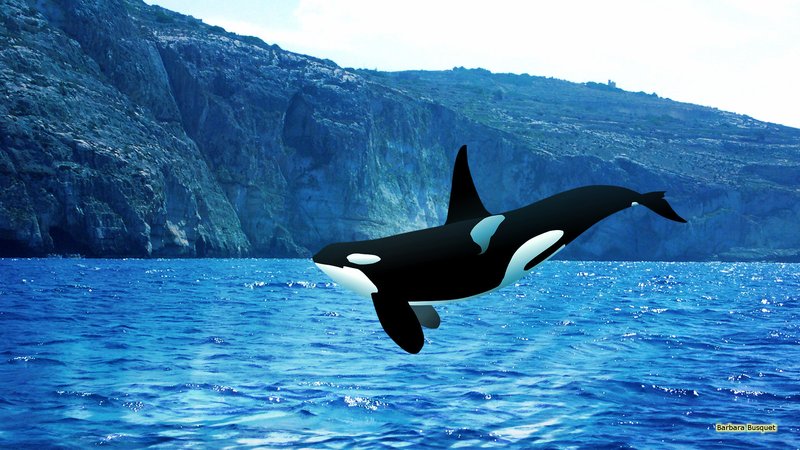
The way orcas navigate and interact with one another is a fascinating blend of biology, behavior, and an almost poetic connection to their environment. They rely on sounds and echolocation, making them true acoustic marvels of the sea, much like how we might rely on GPS or a map to navigate through a new city. So, let’s dive into how these clever creatures make sense of their world and maintain their intricate social networks.
Understanding Orca Communication
Orcas are known to use a unique system of calls and sounds to communicate with each other. It’s fascinating to think about how these vocalizations function like a conversation at a café—each voice sharing information, feelings, and commands. Scientists have discovered that orcas use different types of clicks, whistles, and pulsed calls. Each pod, or family group of orcas, even has its own distinct “dialect”!
These sounds serve multiple purposes. They help orcas locate each other, signal distress, and even coordinate hunting strategies when they are after prey. It’s almost like they have their private language, full of subtle nuances. Imagine trying to coordinate dinner with friends using only sounds—sometimes you might need a loud call to get someone’s attention, while other times, a soft whisper is all that’s needed. Orcas master this form of interaction beautifully.
The Role of Echolocation in Navigation
Echolocation is a remarkable skill that lets orcas navigate through deep and murky waters. Think of it like a bat flying in the dark, using sound to “see” its surroundings. Orcas do this by emitting high-frequency clicks. When the sound waves hit an object—like a fish or the ocean floor—they bounce back. The orca’s brain processes these echoes to create a mental map of its environment.
By using echolocation, orcas can detect not only the distance to an object but also its size and shape. This ability is crucial, especially in the vast, dark ocean where visibility can be low. Have you ever tried to find your way in a dimly lit room? You might feel around to gauge where things are. Orcas do something similar, using their sound waves to chart a path through the water.
Social Structure and Communication Dynamics
Orca pods are structured social units, often made up of family members. Each pod has its own hierarchy, ranging from matriarchs—often the oldest females—to younger, less dominant members. Communication within these pods is essential for maintaining social bonds. A simple greeting call can strengthen ties between individuals, much like a warm hello when meeting a friend.
Researchers believe that the strength of these social relationships impacts hunting success. When orcas communicate effectively, they can coordinate their efforts to catch prey more efficiently. Imagine a group of friends planning a surprise party; everyone has to be on the same page for it to work. Similarly, orcas benefit from their strong social connections, using communication to thrive in their underwater world.
How Orcas Use Sound Beyond Communication
Beyond just talking and navigating, orcas also use sound for more complex tasks. For instance, they can communicate over long distances. This is especially useful in the open ocean, where pods are spread out and visibility is limited. The sounds they make can travel for miles underwater!
When it’s time to hunt, orcas employ specific sounds to signal their intentions. For example, some researchers have noted that when orcas are about to engage in an attack, they might use a series of rapid clicks. It’s like when you and your friends share a secret code that only you all understand during a game—it’s a way to maintain teamwork and secrecy. This strategic use of sound is vital to their survival.
Environmental Factors Affecting Sound and Navigation
Various environmental factors influence how orcas communicate and navigate. Water temperature, depth, and even background noise can impact the effectiveness of their sounds. For instance, colder water can transmit sound better than warmer water, meaning the orcas can communicate more effectively in certain conditions.
Additionally, human activities, like shipping and industrial noise, can create sound pollution that disrupts orca communication. It’s like trying to have a conversation in a crowded café with blaring music; you might miss important details! Orcas face real challenges in their habitats due to these changes, highlighting the need for us to be more mindful of their underwater world.
Conservation and the Future of Orcas
Understanding orca navigation and communication is crucial for their conservation. As their habitats are affected by climate change, pollution, and decreasing prey availability, the need to protect these magnificent creatures has never been more pressing. Efforts to reduce noise pollution and preserve their natural habitats can help ensure that orcas continue to thrive.
Moreover, public awareness can drive meaningful changes. When people learn about how these animals navigate and communicate, they’re more likely to care about their wellbeing. It’s much like learning about a beloved family member; the more you know, the more you want to help.
Orcas are truly remarkable animals with intriguing ways of navigating and communicating. Their ability to use sound for social interaction, navigation, and hunting is a beautiful testament to nature’s ingenuity. Like a complex symphony, each call harmonizes to create connections that bridge distances and foster relationships.
As we continue to study and understand these fantastic creatures, let’s champion their cause and help preserve the delicate balance of their oceanic world. By appreciating how orcas operate, we can take steps to protect their environment, ensuring that future generations can witness the wonder of these majestic animals. Isn’t it amazing to think about the intricate lives that unfold beneath the waves?

